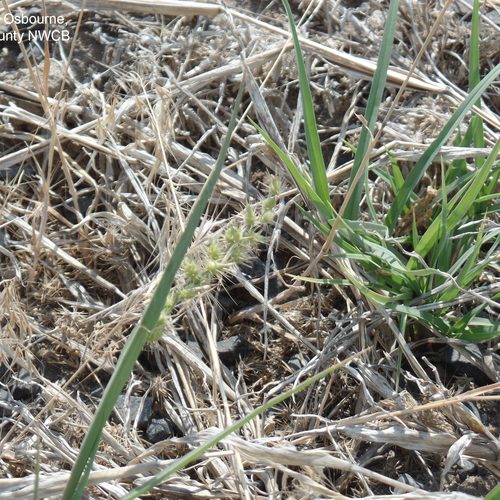Longspine Sandbur
Cenchrus longispinus

Family: Poaceae
Other Common Names: mat sand bur
Weed class: C
Year Listed: 1988
Native to: Canada, Mexico, and parts of the United States
Is this Weed Toxic?:
not known to be
Why Is It a Noxious Weed?
Longspine sandbur was changed from a Class B to a Class C noxious weed in 2013.
How would I identify it?
General Description
Annual that forms mats, blooming mid summer to late fall. Plants are wind pollinated.
Flower Description
Inflorescence can be partially enclosed in sheath, made up of spiny burs, typically with 2 (up to 4) florets each. Numerous spines per bur, sometimes purple tinged. Burs have fine hairs.
Leaf description
Leaves have open (not fused) sheaths. Sheaths compressed and keeled. Hairs present along upper sheath margins and where leaf blade and sheath meet (ligules). Leaf blades can be flat or folded, generally up to 8.5 inches long by 0.12 to 0.24 inches wide.
Stem description
Stems are solid and typically grow 4 to 31.5 inches tall. Stems sometimes growing along the ground and root at the nodes.
Fruit Seed Description
Seed in burs that turn brown as seeds ripen.
Where does it grow?
It grows in open, sandy areas, along riverbanks and disturbed areas. Please click here to see a county level distribution map of longspine sandbur in Washington.
How Does it Reproduce?
Burs spread by attaching to animals and people.
How Do I Control It?
Please refer to the PNW Weed Management Handbook, or contact your county noxious weed coordinator.
For More Information
See our Written Findings for more information about longspine sandbur (Cenchrus longispinus).
Stevens County NWCB Fact Sheet on longspine sandbur











